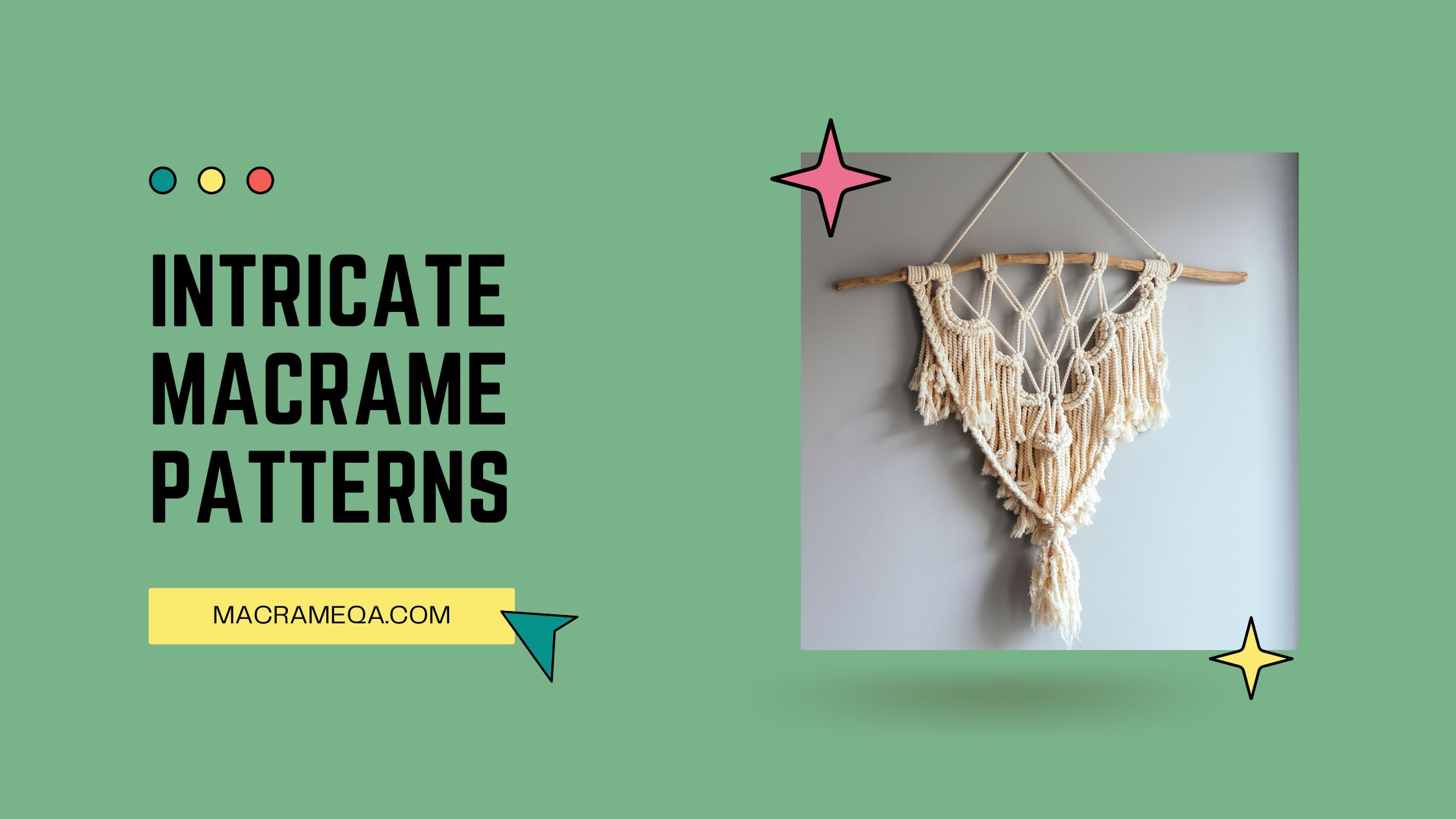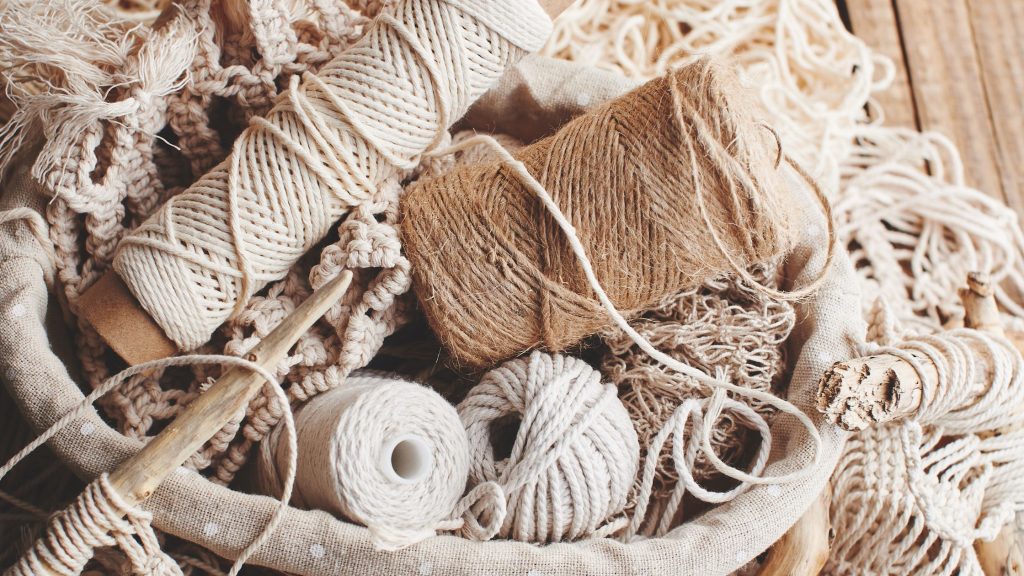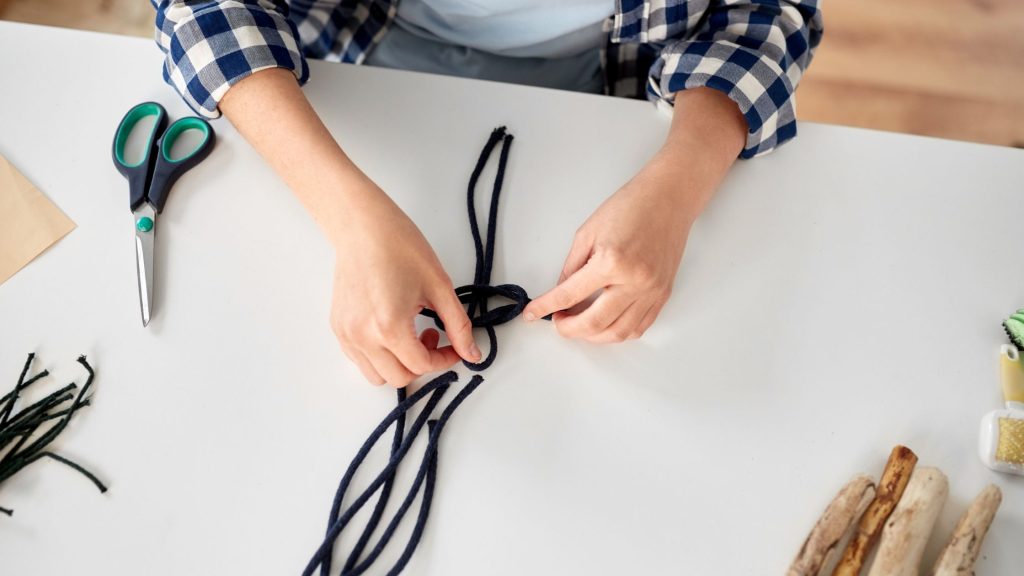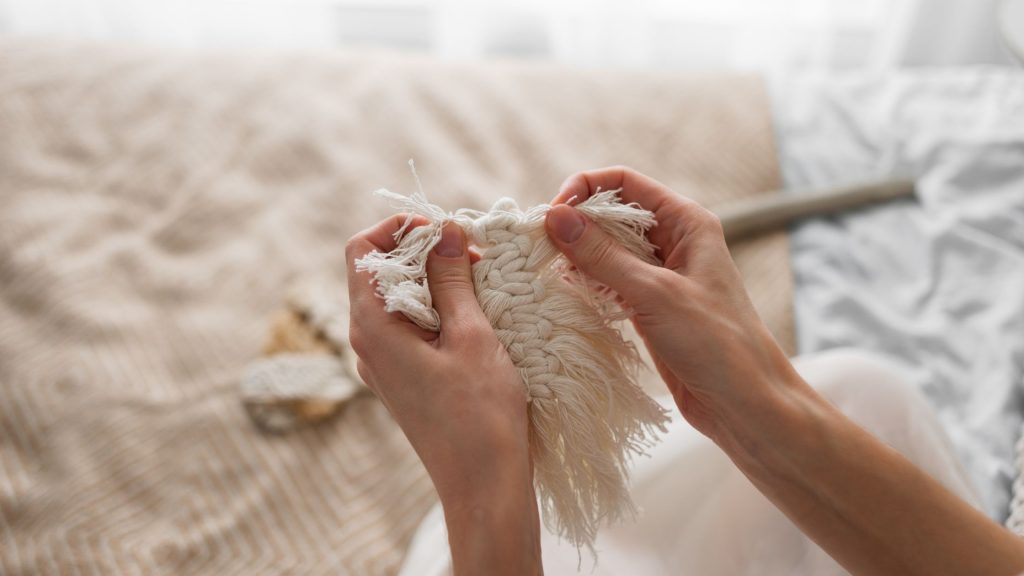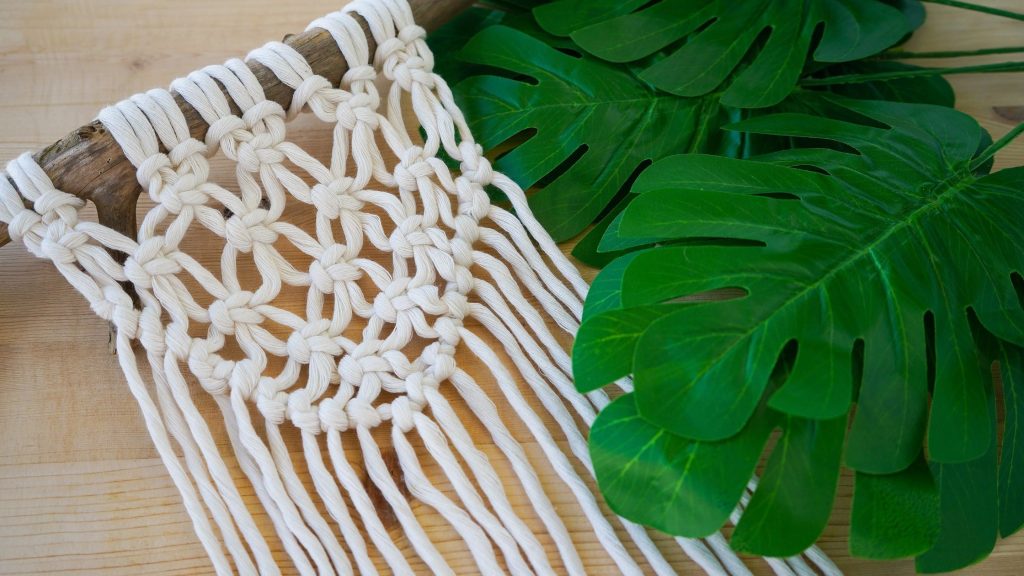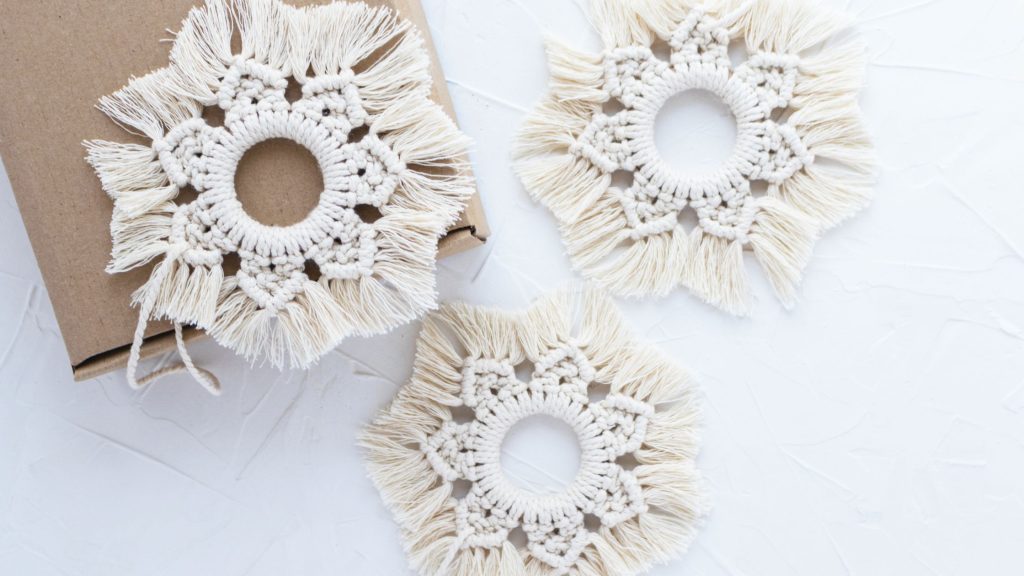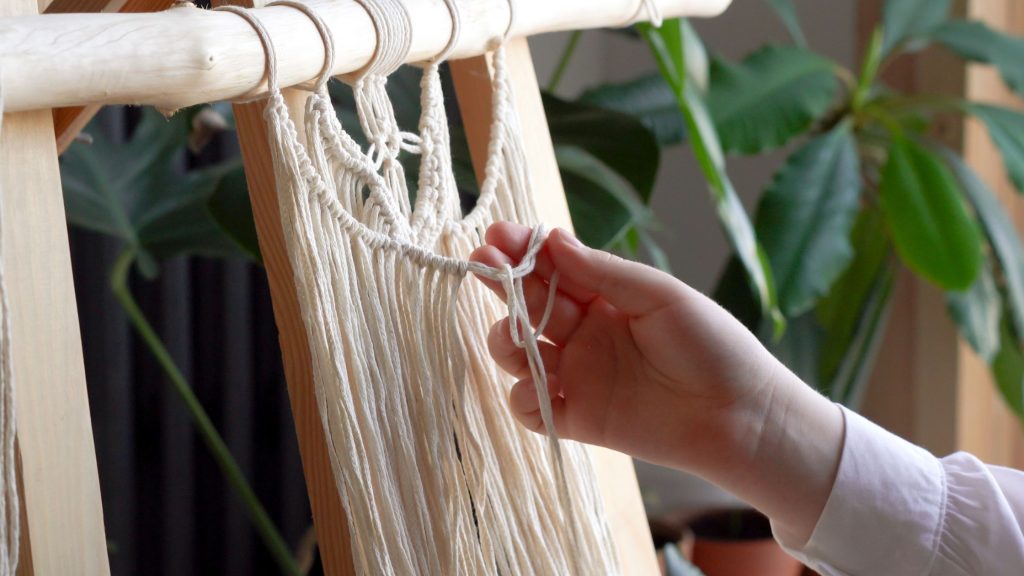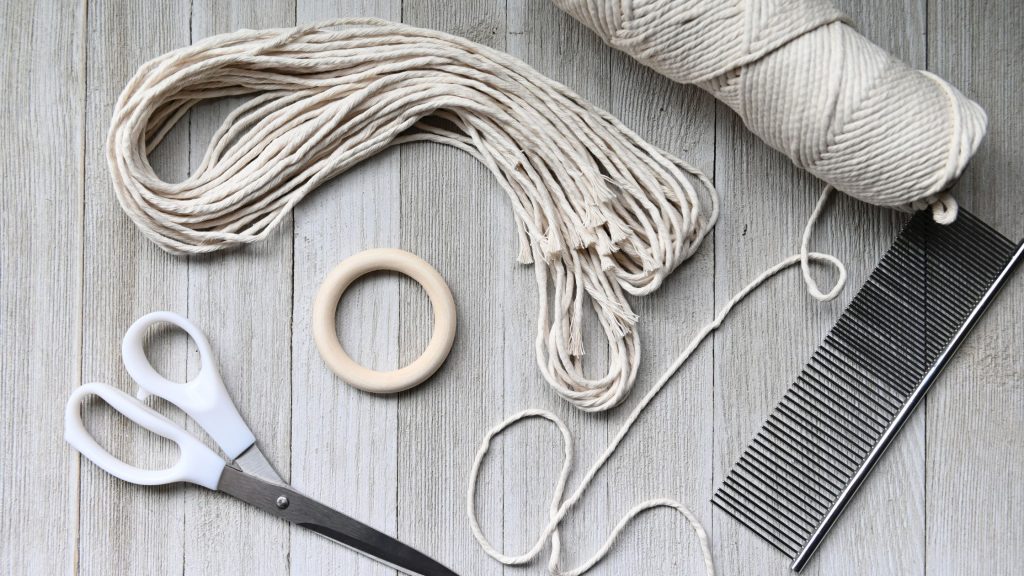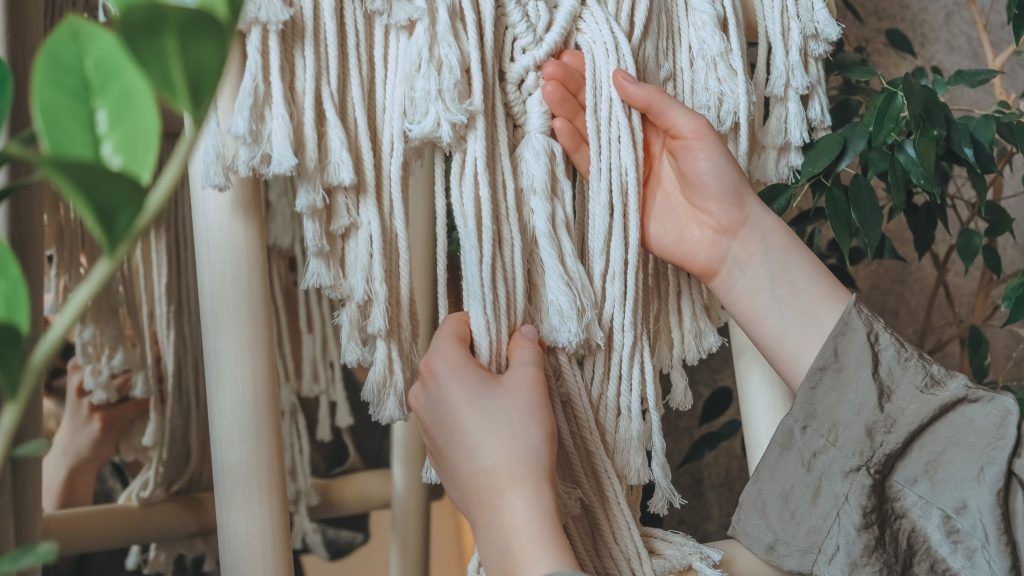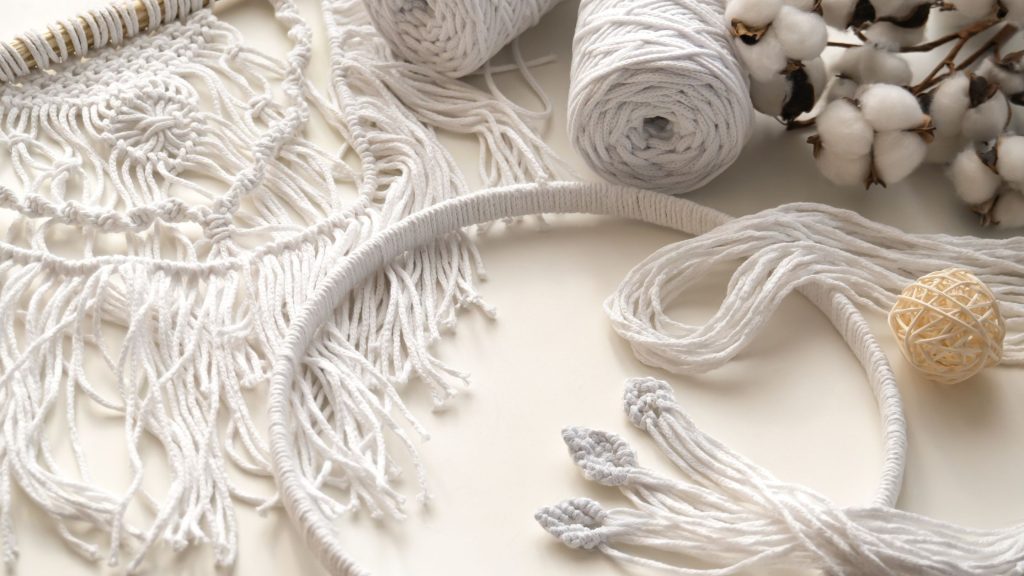Macrame, the ancient art of decorative knotting, has seen a resurgence in popularity in recent years. The delicate and intricate patterns created through this craft are not only visually stunning, but they also provide a sense of accomplishment and satisfaction. However, mastering macrame can be a daunting task for beginners. Fear not, as this article will guide you through the essential techniques required to create intricate macrame patterns.
Whether you are a seasoned macrame enthusiast or just starting out, these techniques will unlock a world of creativity and help you achieve stunning results in your projects.
Have you ever marveled at the intricate beauty of macrame patterns and wondered how they are created? Well, you’re in luck! In this comprehensive article, we will guide you through the fascinating world of macrame, from choosing the right materials to creating intricate designs and mastering advanced techniques. So grab your cord and let’s get started on your macrame journey!
Choosing the Right Materials
When it comes to macrame, selecting the right materials is crucial for achieving the desired results. Determining the type of cord is the first step in this process. There are various types of cord available, including cotton, jute, nylon, and hemp. Each type has its own unique characteristics, so it’s important to consider factors such as durability, texture, and flexibility when making your choice.
Once you have decided on the type of cord, the next step is to select the appropriate thickness. This depends on the project you have in mind and the specific knotting techniques you will be using. Thicker cords are ideal for larger projects or when you want to add more volume, while thinner cords work well for intricate designs or delicate jewelry pieces. By considering these factors, you can ensure that your macrame project turns out beautifully.
Understanding Basic Knots
Before diving into the world of complex macrame patterns, it’s important to master the basics. Learning a few key knots will serve as the foundation for all your future macrame creations. Here are some essential knots to get you started:
Learning the Square Knot
The square knot, also known as the reef knot, is one of the most commonly used knots in macrame. It is created by crossing the left cord over the right cord, then passing the right cord over the left and through the loop formed. Practicing this knot will familiarize you with the technique of alternating cords and setting the stage for more intricate designs.
Mastering the Half Square Knot
Similar to the square knot, the half square knot is created by crossing the left cord over the right, but instead of passing the right cord through the loop, it is passed behind both cords. This creates a diagonal line in the knot. By combining multiple half square knots, you can create beautiful spiraling patterns.
Exploring the Double Half Hitch Knot
The double half hitch knot is used to create vertical lines in your macrame designs. It involves wrapping one cord around the other, then passing it through the loop formed. This knot is excellent for adding depth and texture to your patterns.
Practicing the Spiral Knot
The spiral knot is a mesmerizing technique that adds a unique twist to your macrame creations. It is created by alternating the direction of half square knots, which results in a beautiful spiraling effect. Once you’ve mastered this knot, you can use it to create stunning designs, such as dreamcatchers or wall hangings.
Using the Overhand Knot
The overhand knot is the simplest of all knots and is often used as a starting point or a stopper knot in macrame. It is created by making a loop with the cord and passing the end through the loop. This basic knot is essential for securing your cords and preventing them from unraveling.
Creating Intricate Designs
Now that you have a good grasp of the basic macrame knots, it’s time to unleash your creativity and start creating intricate designs. Here are some techniques and ideas to help you take your macrame skills to the next level:
Combining Various Knots
One of the most exciting aspects of macrame is the ability to combine different knots to create unique textures and patterns. Experiment with mixing square knots, half square knots, double half hitch knots, and spiral knots to achieve the desired look. By varying the order and repetition of these knots, you’ll be amazed at the intricate designs you can create.
Experimenting with Different Patterns
Don’t be afraid to venture beyond traditional macrame patterns. Explore geometric designs, nature-inspired motifs, or even abstract shapes. The possibilities are endless! By experimenting with different patterns, you’ll develop your own style and create truly one-of-a-kind macrame pieces.
Incorporating Beads and Charms
Adding beads and charms to your macrame designs is a great way to add a pop of color and personalization. You can string beads onto individual cords or incorporate them into your knots for an eye-catching effect. Experiment with different sizes, shapes, and materials to create unique and stunning macrame jewelry or home decor pieces.
Adding Tassels and Fringes
Tassels and fringes are popular decorative elements in macrame. They can be added as finishing touches to give your designs a bohemian or playful vibe. Experiment with different lengths and textures to achieve the desired effect. Tassels and fringes can be attached using various knotting techniques or simply by unraveling the ends of your cords.
Integrating Color Variations
Color plays a crucial role in macrame design. A well-thought-out color scheme can enhance the beauty and visual impact of your macrame pieces. Experiment with different color combinations, gradients, or ombre effects to make your designs stand out. Consider the mood and ambiance you want to create when choosing your colors, and let your imagination run wild.
Working with Advanced Techniques
Once you’ve become comfortable with the basic knots and created some intricate designs, it’s time to take your macrame skills to the next level with advanced techniques. Here are a few techniques that will bring your macrame creations to new heights:
Macrame Lace Techniques
Macrame lace techniques involve intricate knotting patterns that create delicate and elaborate designs. These techniques often require more patience and precision but can result in stunningly detailed macrame artwork. Experiment with lace techniques such as the Josephine knot or the netting knot to add an elegant touch to your macrame pieces.
Layering and Weaving
Layering and weaving techniques allow you to create intricate textures and three-dimensional designs. By combining different types of knots, weaving cords, and adding layers, you can achieve a multi-dimensional and visually captivating effect. This technique is particularly effective when making larger macrame wall hangings or statement pieces.
Adding Macrame Jewelry
Macrame jewelry has gained popularity in recent years, thanks to its unique and intricate designs. By combining different knots, beads, and charms, you can create stunning bracelets, necklaces, earrings, and more. Explore different techniques such as micro macrame or incorporating gemstones to elevate your jewelry-making skills.
Creating Macrame Wall Hangings
Macrame wall hangings are a beautiful way to add texture and personality to your home decor. From small, intricate designs to large statement pieces, the possibilities are endless. Experiment with different knotting patterns, layering techniques, and colors to create visually stunning works of art that will transform any wall.
Exploring Macrame Plant Hangers
Macrame plant hangers are not only functional but also add a touch of natural beauty to any space. By using various knots and techniques, you can create unique plant hangers that showcase your plants in an elegant and eye-catching way. Have fun experimenting with different cord colors, lengths, and hanging styles to create a personalized display.
Understanding Macrame Terminology
As with any craft, macrame has its own set of terminology and abbreviations. Understanding these terms will help you follow patterns, tutorials, and instructions more effectively. Here are some essential macrame terms and abbreviations to familiarize yourself with:
Glossary of Essential Macrame Terms
- Cords: Strands of materials, such as cotton or jute, used in macrame.
- Knots: Interlocking loops or twists of cords used to create macrame patterns.
- Patterns: Instructions or diagrams that guide the creation of specific macrame designs.
- Wrapping: Encircling one cord around another to create specific effects or secure knots.
- Fringe: Loose, hanging ends of cords intentionally left unknotted for decorative purposes.
Common Abbreviations Used
- SK: Square Knot
- HSK: Half Square Knot
- DHK: Double Half Hitch Knot
- SK2: Two Square Knots made consecutively
- LHK: Lark’s Head Knot
- CQK: Crown or Chinese Quatrefoil Knot
Tips for Precision and Accuracy
When it comes to macrame, precision and accuracy are key to creating beautiful and professional-looking pieces. Here are some tips to help you achieve precise and accurate results:
Maintaining Consistent Tension
Consistency in tension is crucial for achieving uniform and well-balanced macrame patterns. Make sure to maintain the same level of tightness throughout your project. Practice maintaining a relaxed grip on the cords and develop a rhythm that feels comfortable for you. Consistent tension will ensure that your knots are secure and your patterns are visually pleasing.
Using Proper Measuring Techniques
Accurate measurements are essential for achieving symmetry and balance in your macrame designs. Use a ruler or measuring tape to ensure that your cords are cut to the correct length. Take the time to measure and mark your cords before starting a project to avoid any discrepancies in length. This attention to detail will greatly enhance the overall look of your macrame piece.
Enhancing Visual Symmetry
Symmetry is often a desirable feature in macrame designs. To achieve visual symmetry, it’s important to pay attention to the placement and symmetry of your knots. Count the number of knots on each side of your project to ensure balance. Step back and assess the overall symmetry of your work as you progress to maintain consistency and harmony in your design.
Securing Knots Correctly
Securely tying your knots is crucial for preventing unraveling and ensuring the longevity of your macrame piece. Take the time to tighten each knot properly and double-check its tightness before moving on. If necessary, use a small dab of glue or clear nail polish to secure the ends of your cords, especially in jewelry pieces or areas prone to movement.
Troubleshooting Common Issues
Even the most experienced macrame artists encounter challenges along the way. Here are some common issues you may encounter during your macrame journey, along with tips for troubleshooting and resolving them:
Fixing Loose Knots
Loose knots can ruin the overall appearance of your macrame piece. To fix them, carefully unravel the knot and retie it, ensuring that the cords are tightened firmly. If the knot is still loose, consider adding a small amount of glue or clear nail polish to secure it.
Undoing Mistakes
Mistakes happen to the best of us, and undoing them is a skill every macrame artist should master. If you make a mistake, carefully unravel the section with the error and rework it. Take your time and be patient with yourself. Undoing mistakes is an essential part of the creative process.
Avoiding Tangling and Knot Slippage
To avoid tangling, keep your cords organized and separate as you work. Use cord holders or clips to keep them from tangling together. If you notice your knots slipping, try tightening them more firmly or add small knots or wraps around the base of the original knot for added security.
Dealing with Fraying Ends
Fraying ends are an inevitable part of working with cord in macrame. To prevent fraying, you can use clear nail polish or fray check liquid to seal the ends of your cords. Another option is to wrap a small amount of tape around the ends to create a temporary barrier. It’s important to address fraying ends as soon as you notice them to prevent further damage.
Exploring Macrame Resources and Communities
Embarking on a macrame journey is an exciting and immersive experience. To enhance your skills and connect with fellow macrame enthusiasts, consider exploring various resources and communities:
Joining Macrame Workshops or Classes
Participating in macrame workshops or classes provides the opportunity to learn new techniques, receive hands-on guidance, and connect with other artists. Look for local craft stores, community centers, or online platforms that offer macrame workshops. These educational experiences can further inspire and motivate you on your macrame journey.
Following Macrame Tutorials Online
The internet is a treasure trove of macrame tutorials that can guide you through different techniques and projects. Many talented macrame artists share their knowledge and expertise through blogs, YouTube channels, and social media platforms. Take advantage of these resources to learn new skills, gain inspiration, and expand your macrame horizons.
Participating in Macrame Forums and Groups
Online macrame forums and social media groups provide a space for macrame enthusiasts to connect, share ideas, and ask questions. Joining these communities allows you to interact with fellow artists, exchange tips and tricks, and participate in discussions about all things macrame. It’s a wonderful opportunity to expand your knowledge, seek advice, and foster a sense of belonging within the macrame community.
Attending Macrame Exhibitions and Events
Macrame exhibitions and events are a fantastic way to immerse yourself in the world of macrame. Check out local art galleries, craft fairs, or cultural events in your area for opportunities to view macrame artwork, meet artists, and gain inspiration. Seeing the work of experienced macrame artists in person can be truly awe-inspiring and fuel your own creative drive.
Discovering Macrame Artists and Influencers
Follow macrame artists and influencers on social media platforms to get a daily dose of macrame inspiration. These artists often share their latest creations, behind-the-scenes insights, and tips for navigating the macrame world. Engaging with their content and learning from their experiences can greatly enhance your own macrame journey.
Caring for Macrame Pieces
Once you’ve invested time and effort into creating beautiful macrame pieces, it’s important to properly care for them to ensure their longevity. Here are some tips for caring for your macrame creations:
Cleaning and Washing Techniques
Cleaning macrame pieces can be a delicate process due to their intricate designs and materials. Dust your macrame regularly using a soft brush or a hairdryer on a low, cool setting. If your macrame piece becomes soiled or stained, spot cleaning is recommended. Gently dab the affected area with a mild detergent and water solution, then pat dry with a clean cloth. Avoid rubbing or submerging the entire piece in water, as this can distort the knots and cause damage.
Proper Storage Methods
To prevent your macrame pieces from tangling or getting damaged, store them in a clean, dry area away from direct sunlight. Rolling or loosely folding your macrame works with acid-free tissue paper can help maintain their shape. For larger wall hangings, consider laying them flat or hanging them from padded hangers to avoid excessive stress on the cords.
Preventing Damage and Discoloration
To keep your macrame pieces looking vibrant and pristine, avoid exposing them to direct sunlight or excessive humidity. Prolonged exposure to sunlight can cause the cords to weaken, fade, or discolor over time. Additionally, be mindful of any potential hazards, such as pets or children, that could accidentally pull or unravel your macrame creations.
Finding Inspiration and Getting Started
One of the best ways to embark on your macrame journey is by finding inspiration and getting started on a project. Here’s how to kickstart your creativity:
Exploring Macrame History and Origins
Understanding the history and origins of macrame can provide valuable context and inspiration for your own work. Research the different cultures and time periods that have influenced the art of macrame, such as Ancient Egypt, China, or the hippie movement of the 1960s. Discovering the rich traditions and techniques can greatly inspire your own macrame designs.
Researching Different Macrame Styles
Macrame has evolved over the years, and different styles and trends have emerged. Explore different macrame styles, such as bohemian, modern, or minimalist, to find one that resonates with your personal aesthetic. Pay attention to the materials, knotting techniques, and color palettes commonly used in each style to inform your own creations.
Creating a Macrame Design Plan
Before diving into a new macrame project, take the time to plan and visualize your design. Consider the size, shape, and purpose of your creation. Sketch or create a mood board to help you envision the final result. Planning ahead will not only ensure a successful project but also allow you to gather the necessary materials and techniques required.
Gathering Essential Macrame Tools
Having the right tools is essential for a successful macrame project. Some essential tools to have on hand include sharp scissors, a ruler or tape measure, cord holders or clips, and a sturdy surface to work on. Additionally, consider investing in specialized macrame tools, such as cord winders or cord organizers, to make your macrame experience more efficient and enjoyable.
Conclusion
With all the information provided in this comprehensive guide, you are well-equipped to embark on your macrame journey. From choosing the right materials to mastering intricate designs and advanced techniques, macrame offers endless opportunities for creativity and self-expression. So grab your cords, unleash your imagination, and dive into the world of macrame. Happy knotting!

